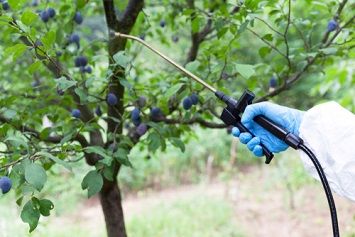Under the Endangered Species Act (ESA), the EPA is required to conduct biological evaluations (BEs) of pesticides to determine their effects on endangered and threatened species (listed species) and their critical habitats. The Agency has now issued a nonregulatory method for conducting BEs.
The Revised Method amends an Interim Approach to performing BEs the Obama administration issued in 2015. According to the EPA and other federal agencies that oversee species protection and agricultural production, the Revised Method improves upon the Interim Method primarily by placing a stronger emphasis on actual rather than potential pesticide uses and impacts on listed species, as well as their critical habitat. That approach is expected to lead to a process that speeds up the delivery of pesticides to the market and the agricultural sector.
Stakeholder Input
BEs are critical steps in determining whether an agricultural pesticide can be registered or reregistered for specific uses under the Federal Insecticide, Fungicide, and Rodenticide Act (FIFRA) and whether restrictions must be applied to the use of a registered or reregistered pesticide.
The 2015 Interim Approach was based on recommendations made by the National Academy of Sciences in a 2013 report. The Interim Approach was used in the first three national-level BEs (for chlorpyrifos, diazinon, and malathion).
According to the EPA, the Revised Method is based on recommendations from the National Research Council (NRC); EPA’s lessons learned during the first three pilot BEs; public comments provided through stakeholder meetings, through the docket on the draft BEs for chlorpyrifos, diazinon, and malathion, and through the docket on the proposed Revised Method; comments received during consultation with federally recognized tribes; and comments provided by the U.S. Fish and Wildlife Service and National Marine Fisheries Service—collectively, the services.
Use and Usage
The Revised Method incorporates two distinct terms: pesticide use and usage. Use data are based on registered labels and define crop or noncrop use sites to which a pesticide may be applied, along with the maximum application rates, method (e.g., aerial or ground spray), retreatment intervals, and number of applications that may occur according to the labels. Step 1 of a BE relies entirely on use data. The Revised Method incorporates “high-quality pesticide usage data into the Agency’s BE process for the first time.” Usage data describe documented applications of a pesticide, including information such as actual application rates and timing and spatial distribution of applications (usually based on survey data). The key difference between use and usage is potential applications vs. actual applications. Under the Revised Method, Step 2 of a BE incorporates both use and usage data.
Reactions
The Revised Method was well received in the agricultural and pesticide community, including CropLife America (CLA), which represents manufacturers, formulators, and distributors of pesticides.
“While CLA is still reviewing EPA’s proposal, we appreciate the Agency’s commitment to a process that is efficient, protective of species, and based on the best available science,” says CLA. “The best way to balance these objectives is to rely upon real-world data and analyses that reflect where and how pesticides are actually used. Pesticide usage data is an important part of this revised method and represents a major step forward by EPA to use the best scientific and commercial data available.”
The Center for Biological Diversity (CBD), an organization that relentlessly petitions the courts to order the federal government to expand and enforce ESA protections, reacted differently.
“The revised methods from the Trump administration, requested by the pesticide industry, overlook and ignore many of the common ways that protected species are harmed and killed by pesticides,” says the CBD. “For example, they fail to take into account downstream impacts of pesticides that runoff into streams and rivers or the loss of insect pollinators that endangered plants depend upon.”
Draft BEs
In conjunction with the release of the Revised Method, the EPA also announced the release of draft BEs for the insecticides carbaryl and methomyl. The BEs were conducted using the Revised Method. The EPA preliminarily found that carbaryl is likely to adversely affect 86 percent of listed species and 90 percent of critical habitat. Preliminary findings for methomyl are that 62 percent of listed species and 42 percent of critical habitats are likely to be adversely affected.
“Species adversely affected include the highly endangered whooping crane, San Joaquin kit fox, and all species of salmon,” notes the CBD.

